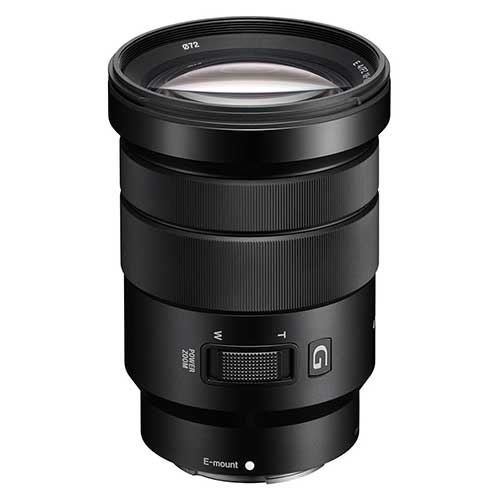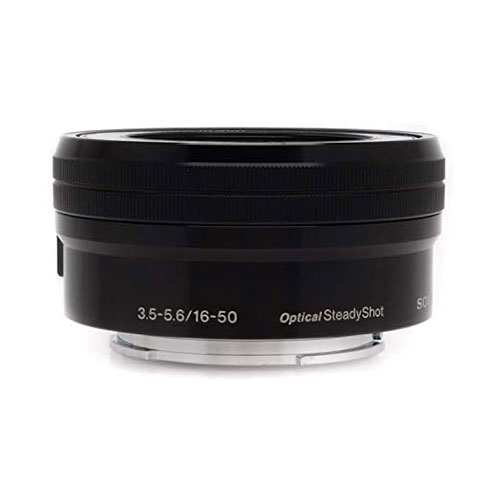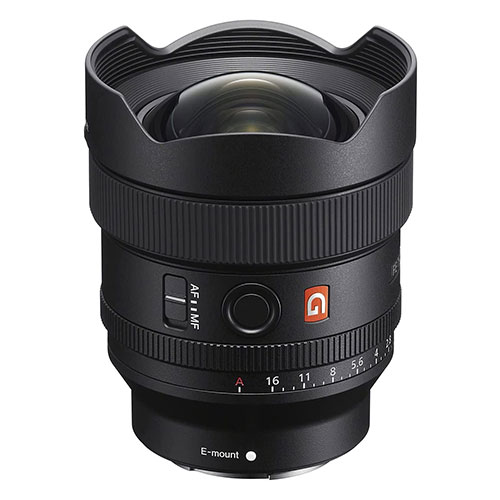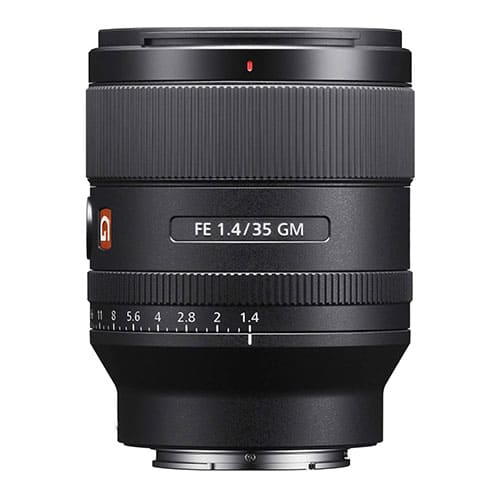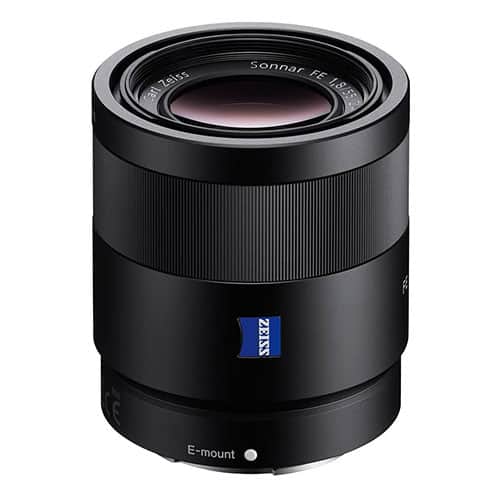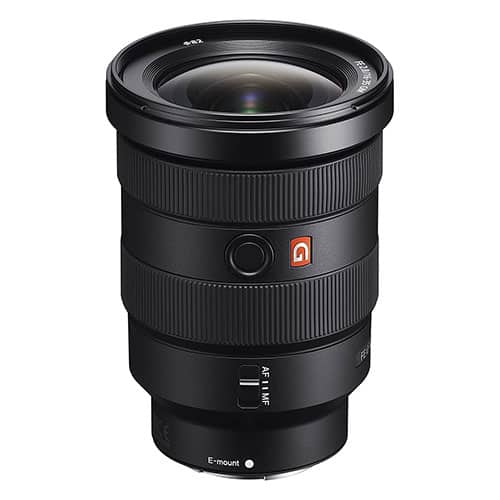Sony’s powerful yet petite a6400 Mirrorless camera packs a lot of features into a compact and lightweight body. This makes it an excellent choice for travel photography, where portability and versatility reign supreme.
But in order to get the most out of the a6400 as a travel companion, you’ll also need to bring the right lenses with you.
Travel photography involves capturing a diverse range of subjects, in highly varied conditions. Often with little idea of what waits around the corner.
Successful travel photography, then, means expecting the unexpected.
But couple the a6400 with the wrong optics, and you’ll spend half your trip frustrated by all the amazing photos that got away.
Yet bring too much heavy glass with you, and your a6400 will turn into a ball and chain, stopping you from living the moment in full.
Which lenses should you choose for travel photography with the a6400?
In this guide to the best Sony a6400 lenses for travel photography I list seven native Sony optics that I personally think are up to the task.
I then move on to considering what makes a great travel photography lens for the a6400 and how you should approach choosing the right lens – or even lenses – for your own travel photography adventures.
Sony E PZ 18-105mm f/4 G OSS
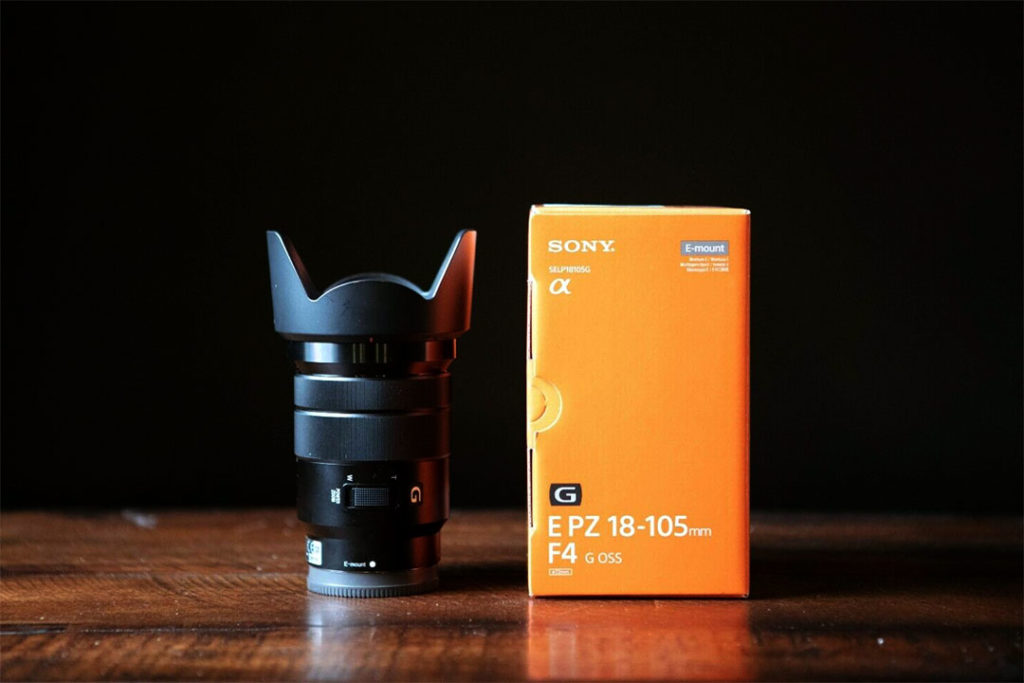
Let’s get the bad news out of the way first: while the Sony E PZ 18-105mm f/4 G OSS is a very ruggedly-built lens, it doesn’t come with any protection against water or dust.
So it’s perhaps not the best choice for the more adventurous (or simply careless) traveler.
It’s also relatively big for an APS-C Mirrorless lens.
So if you’re the kind of travel photographer who likes to keep a low profile, or want to be able to carry your a6400 in a coat pocket rather than a bag, you may may prefer to go for a lens that’s slimmer and less conspicuous than this one.
The 18-105mm is also a little on the slow side in terms of aperture.
True, as it’s one of the few zooms for the a6400 that works with Sony’s SteadyShot image stabilization system, arguably you’ll be able to get away with shooting at slower shutters speeds and/or lower ISOs than would be possible with a faster lens that lacks OIS.
But of course, the advantage of fast aperture lenses is not merely their ability to capture light, but also to blur backgrounds. A feat that’s difficult enough to achieve on a cropped-sensor camera as it is, never mind with one that can only manage a middling f/4.
So bokeh fetishists might also want want to skip this lens, as you certainly won’t be seeing a huge amount of background blur here.
With that said, though, while f/4 is not exceedingly fast, the 18-105mm does at least offer this maximum aperture throughout its entire zoom range; by no means a given with Sony’s dedicated APS-C zoom lenses.
Really, though, the main draw here as far as travel photographers are concerned is simply that the E PZ 18-105mm offers such an impressive zoom range without compromising image quality.
Having this thing on the front of your a6400 is effectively like carrying around a handful of really nice sharp prime lenses – but without either the extra weight or the expense.
And for many travel photographers this combination will simply prove unbeatable.
Using an aperture of f/4 at the widest zoom setting, central sharpness is excellent. As is contrast. Yes, the corners could be a little better here, but as a travel photographer the only time you’re likely to really care about sharpness at the edge of the frame is when shooting landscapes. And who shoots landscapes at f/4 anyway?
And as it happens, corner sharpness massively improves even by f/5.6 – long before you get anywhere close to landscape territory.
What’s more, at longer zoom settings, center sharpness is probably even better. Again with the corners clearing up beautifully once the lens has been stopped down even slightly.
If you were to switch off in-camera corrections, or shoot RAW files rather than JPEGs, you would notice a degree of distortion – particularly at longer focal lengths. But this issue is simple enough to fix at the post production stage.
Admittedly the bokeh produced by this lens doesn’t especially excite me. But nor does it offend the eye.
And as already mentioned, with that slow maximum aperture, you will struggle to get much in the way of background blur at all but the longest of zoom settings anyway.
Finally, autofocus is fast, accurate, and silent. So there’s no cause for concern in this department.
To summarize, then, for those who can live with the relatively slow maximum aperture and the lack of weather sealing, this is a great all-in-one travel photography lens.
Sony FE 20mm f/1.8 G
Offering a faster maximum aperture than most comparable lenses – whether from Sony or third party manufacturers – and an angle of view equivalent to 30mm on full-frame, in my mind the Sony FE 20mm f/1.8 G is pretty close to being the ultimate prime lens for travel photography.
In fact, if I were ever forced to keep my travel photography kit down to an absolute minimum, I’d probably be pretty happy to just take the a6400, this lens, and nothing else.
Aside from the bright f/1.8 aperture and handy focal length – plenty wide enough for landscapes and street photography, but just about workable for an occasional portrait too – the real selling point here is the lens’s amazing image quality.
With incredible sharpness at all aperture settings, it really is one of the best wide angle primes available for Sony’s cameras – in any format.
There is some mild distortion and vignetting. But this of course can be corrected in-camera or at the post-processing stage. Chromatic and other aberrations are virtually non-existent though.
The lens is fully weather sealed and features a great quality metal and plastic build. Admittedly it’s not an especially small lens, but it is very light.
With the aim of offering a balanced review, I feel like I should look around now for some less positive points to mention. But they really are few and far between.
I guess I could say that the manual focus ring is perhaps not my favorite of all those I’ve ever used. But it’s fine really. Just a little unresponsive.
And although admittedly it’s not unheard of for the autofocus to occasionally drop the ball, generally AF is fast, accurate, smooth, and silent.
Finally, as this lens is intended for full-frame users, not only does it provide a much tighter crop on APS-C bodies, but unfortunately SteadyShot won’t work when it’s used on the a6400 either.
This latter point might be of some concern if you intend to shoot a lot of video.
If that’s you, checkout my article about video lenses for the sony a6400!
But travel photographers who largely focus on stills probably won’t find it to be a major handicap.
Especially with a lens this wide, where camera shake is always less of an issue anyway.
But these minor points aside, I really can’t say enough good things about this lens. It’s truly a fantastic piece of glass.
It’s true that the 20mm f/1.8 G is not an especially cheap lens. But with it’s near-perfect image quality, in my opinion it’s worth every cent of the asking price.
Indeed, its optical performance is on a par with Sony’s more expensive G Master glass, and also stands up admirably against pretty much any similarly-specced lens from the brand’s competitors.
Highly recommended!
Sony E PZ 16-50mm f/3.5-5.6 OSS
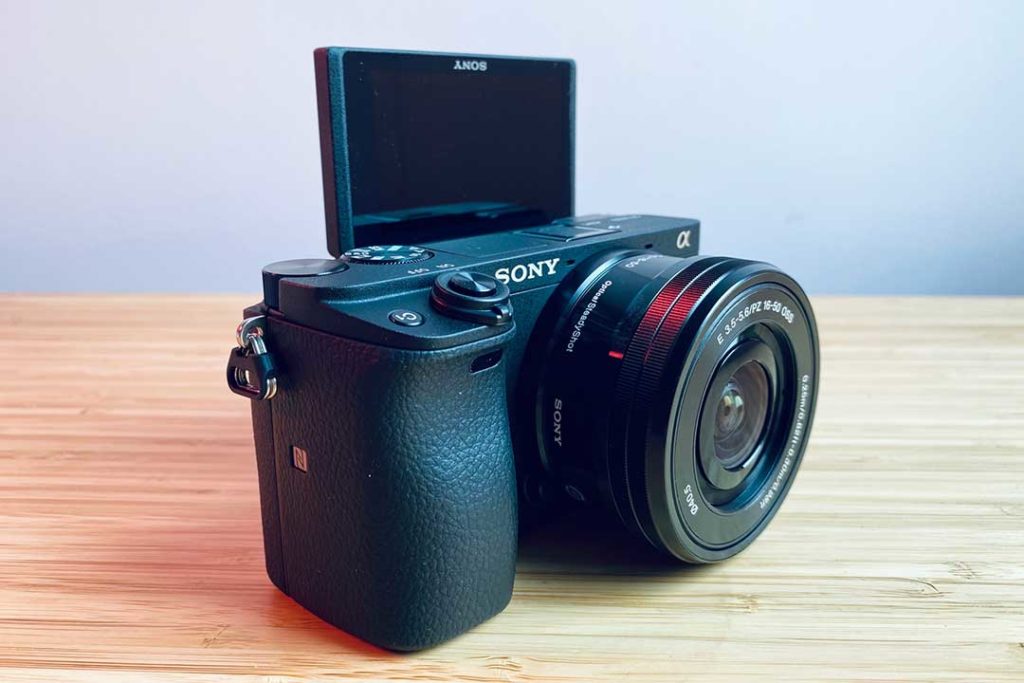
If the Sony E PZ 16-50mm f/3.5-5.6 OSS seems familiar to you, this is likely because it’s the kit lens that came with your a6400 (assuming it came with a lens at all).
Kit lenses generally don’t enjoy a great reputation.
Usually for good reason; they are typically cheaply made, have a gloomy maximum aperture, produce mediocre quality images, and offer little in the way of sophisticated features.
Yet there are exceptions. And the Sony 16-50mm f/3.5-5.6 is one of them.
True, a lens that can only manage f/5.6 at the longer end of its zoom range is by no means fast. But that’s looking at the glass half empty.
But adopting a glass-half-full-perspective instead, it’s worth noting that with a maximum aperture of f/3.5 at the wider end of the spectrum, this lens is actually faster than many of Sony’s more expensive APS-C zooms (they are typically a constant f/4).
What’s more, as it’s made specifically for cropped-sensor cameras, the 16-50mm suffers from none of the compatibility issues with the a6400 that we see with full-frame offerings. Which means that we get fully working optical image stabilization too.
And in practice this may make up for the somewhat slow maximum aperture at the 50mm mark, allowing you to pull off shake-free shots at slower shutter speeds than would otherwise be possible.
Another draw for travel photographers is simply the size of this thing; despite offering pretty much every focal length the average travel photographer could wish for, it’s really very compact and lightweight.
Meanwhile autofocus is fast, accurate, and near-silent. I.e. actually better than on some much more expensive Sony glass.
Of course, great AF, SteadyShot, and a compact design wouldn’t be much good to us if they weren’t also backed up by top notch image quality. And this is really the aspect in which the 16-50mm f/3.5-5.6 most strongly breaks the kit lens mold.
At the widest zoom setting, shooting at f/3.5, center sharpness is really quite impressive. Yes, the corners lag a little behind. But shut the diaphragm down a stop or two and even the periphery starts looking nicely crisp. It’s the same deal with contrast.
Zoom through to longer focal lengths, and the story is even better; a tad extra center resolution, and now there’s even pretty good corner sharpness when shooting wide open!
The 16-50mm f/3.5-5.6 may not be the absolute best travel photography lens available for the Sony a6400. It is, however, one of the better ones – at any price point – and is especially worth considering if you’re on a budget.
Sony FE 14mm f/1.8 GM
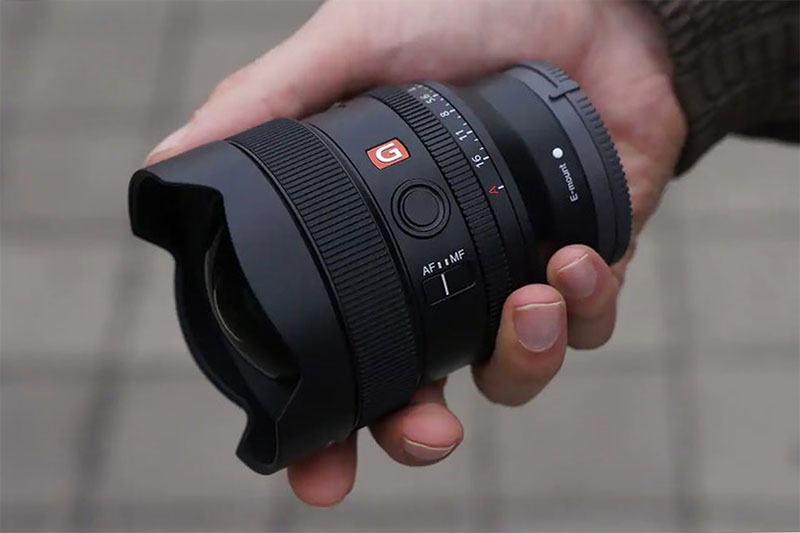
Yes, I know. This lens costs more than you paid for your a6400. And the SteadyShot won’t even work with your camera because this is a full-frame lens.
What’s more, the 14mm f/1.8 is relatively big and heavy when coupled with a cropped-sensor camera such as the a6400.
So does it really make sense to put this thing on the a6400?
Well, let’s be clear, for many users it won’t make much sense at all.
For others, though, I can’t recommend it enough.
Who are those users? Well, I’m specifically thinking of travel photographers in need of a wide angle lens who value image quality above all else, but who also require a fast maximum aperture.
Perhaps you shoot a lot of landscapes and architectural images? But maybe you’re also into street photography? Or documentary?
If that’s you, and you’re happy to pay for exceptional optics, this thing is almost flawless.
Even wide open, sharpness and contrast are excellent. And this performance only gets better as you shut down the aperture slightly.
Color rendition, too, is very attractive.
Yes, there is some slight vignetting and distortion when in-camera corrections are turned off. But really nothing to worry about. And there’s very little in the way of color fringing or other aberrations.
Heavily defocussed backgrounds are of course very difficult to achieve on such a wide lens, especially on an APS-C camera. But as the 14mm f/1.8 will focus as close as 25cm, you can certainly get a degree of selective focusing if you try.
And when you do, rest assured that the results will be very pretty indeed.
Oh, and while I think of it, autofocus is great as well; fast, accurate, and totally silent.
What’s more, although I mentioned above that it’s not a small lens, in realty it’s not that big and heavy when you compare it to the alternatives. Especially considering how much has been packed into this thing in the way of features.
It’s also sturdily built and comes with a good degree of weather sealing.
All things considered, then, this one of the best lenses – if not in fact the absolute best lens – of its kind out there right now.
In fact, before moving on, let’s take a moment to fully appreciate just what Sony has achieved here: a lens equivalent to roughly 24mm on full-frame, with a maximum aperture of f/1.8, and stunning image quality. All crammed into a durable and fairly portable little package.
While it might be a bit of niche product, for some a6400 travel photographers the 14mm f/1.8 GM is a dream come true.
Sony FE 35mm f/1.4 GM

On Sony’s full-frame cameras the FE 35mm f/1.4 GM will provide a moderately wide field of view.
But coupled with the a6400 it behaves more like a “standard” lens. I.e. the equivalent of 52mm on full-frame.
Is a standard lens a travel photography lens?
I certainly think it can be. Perhaps even your only travel photography lens. It all depends on your shooting style and preferences.
Indeed, travel photographers who shoot a lot of portraits, but who also want to be able to do the occasional landscape, street photo, or capture more general travel scenes, may find that a 50mm-equivalent lens offers the best all-round compromise.
And the fact that this particular standard lens comes with a beautifully fast maximum aperture and excellent optics makes it a particularly appealing option. Albeit a somewhat expensive one; this is one of Sony’s top-end G Master lenses after all.
So, what do you get for your money?
Well, as with all these GM lenses, build quality is very sturdy. Yes, it’s a plastic barrel, but modern engineered plastics are extremely robust, and there’s metal where it matters; i.e. at the lens mount.
The lens also comes sealed against the elements, so whether you’ll be scaling the Himalayas, trekking through rainforest, or simply hanging out at the beach, it should be more than up to the strain.
Meanwhile, autofocus is fast, accurate, and very quiet indeed. There’s nothing more to add here.
The real draw, though, is simply the quality of the images this lens is capable of producing. There’s great contrast and sharpness right across the frame, and throughout the aperture range, from f/1.4 through to about f/11. That’s pretty impressive.
Also, bokeh is very nice indeed. Further adding to the lens’s appeal for portrait photographers.
Yes, if you turn off in-camera corrections or shoot RAW, you’ll notice some pincushion distortion and vignetting when the lens is used wide open. But a little Photoshop will fix this easily enough. And in any case this clears up nicely as you shut down the diaphragm. Neither flare nor chromatic aberrations are major issues.
Beyond the price, then, the only downside here is that the lens doesn’t offer image stabilization. For full frame users that’s not really an issue, as camera shake will be much less noticeable on a 35mm lens.
I don’t think it’s essential on a 50mm lens either really, but I’d certainly agree that it would have been nice to have.
The lack of SteadyShot would certainly not stop me from buying this lens though. Not if it ticked all the other boxes for me. It’s undoubtedly a beautiful bit of kit.
Sonnar T* FE 55mm F1.8 ZA
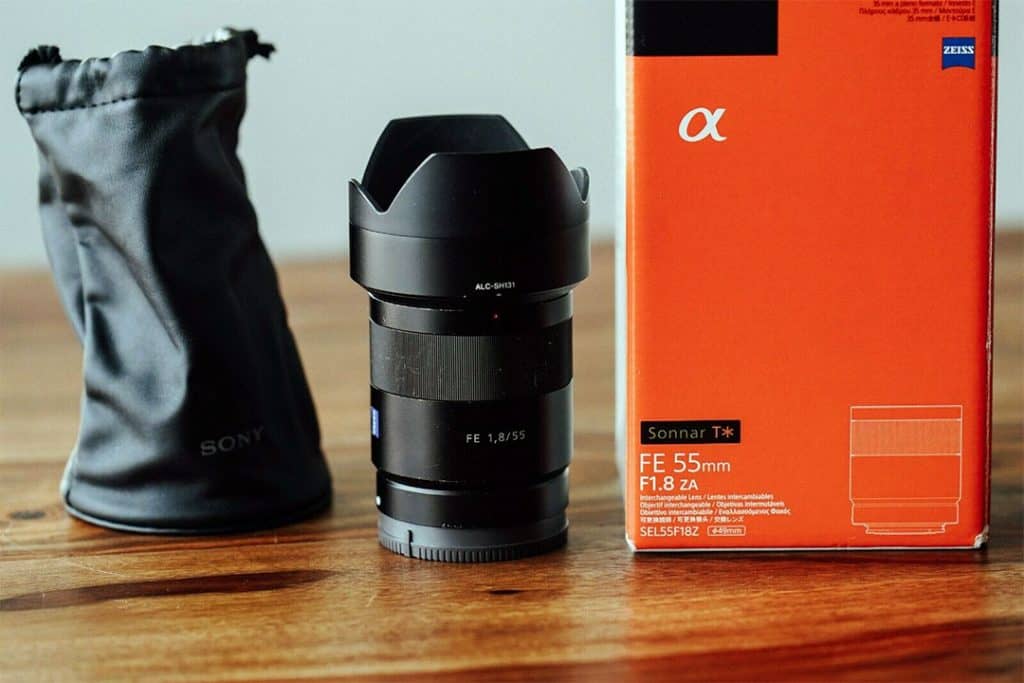
Travel photography is an all-encompassing term. Effectively it can be any type of photography that’s done while traveling. In practice, then, it means different things to different people, depending on their personal interests.
One thing it means to a lot of people. though, is portraiture. And for these photographers a good travel photography kit will need to include a great portrait lens.
You can shoot portraits on standard lenses. Even on moderately wide angle lenses. But when the majority of people talk of dedicated portrait lenses, they mean something around the 80mm mark.
Ideally with a fast aperture for blurring the background, and great optics in order to capture the “windows on the soul” – the sitter’s eyes – in crisp sharpness.
Although the Sonnar T* FE 55mm F1.8 ZA was designed for full-frame use – where it’s a faithful standard lens – when placed on the a6400 it becomes just such a portrait lens.
Offering as it does an angle of view that is equivalent to 83mm.
Image sharpness is fantastic, from f/1.8 through until f/11. Indeed, it’s even slightly better than Sony’s sharp but cheap 50mm f/1.8 OSS.
True, the cheaper OSS lens comes with SteadyShot, whereas this Zeiss lens lacks image stabilization altogether.
I’ve nothing against image stabilization – quite the contrary. And if you do feel like SteadyShot is essential, the cheaper 50mm might be the better option for you.
But only if you’re the kind of photographer who really looks after their gear.
Personally I’m not much of a gear fetishist though. Lenses are tools to get a job done, and of course need to be treated with some respect. But I’m not overly precious about my photographic equipment.
And if I’ll be slumming it on a punishing off-the-beaten-track adventure, well, my gear is in for a rough ride too.
That being the case, personally I’d go for the very solid metal build and weather sealing of this lens over its APS-C-oriented and OIS-equipped cousin. It just makes more sense to me as a travel photography lens.
I also prefer the bokeh on this lens. And for portraits that’s a pretty important consideration.
Also, although the lens was designed for full-frame, it’s not excessively big.
Pack this and something like the 20mm f/1.8 G or the 35mm f/1.4 GM, and you’ve got a fairly minimalist setup that will let you shoot everything from head shots to environmental portraits, and even landscapes and beyond.
Admittedly, the Sonnar T* FE 55mm F1.8 ZA isn’t a totally perfect lens. For example, although autofocus is accurate and silent, it’s not as fast a some of Sony’s other offerings. It’s fast enough for most travel photography though.
Sony FE 16-35mm f/2.8 GM
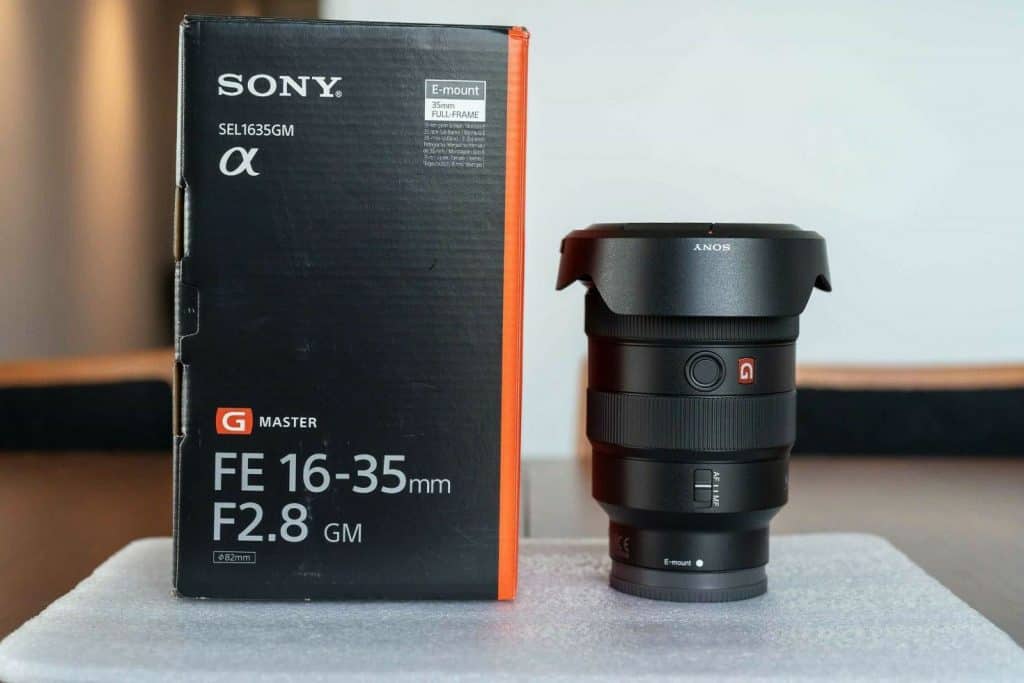
I admit it, Sony’s FE 16-35mm f/2.8 GM is another “luxury” option that will likely be overkill for most 6400 owners.
What’s more, after spending all that money you don’t even get to make us of the lens’s excellent SteadyShot image stabilization.
So I can see that this may seem like a particularly bad deal.
But there are a number of reasons why I’ve included this lens here.
Firstly, zooms with working SteadyShot that are available for the a6400 tend to be at the lower end of Sony’s budget range. And while some produce images of surprisingly high quality, they rarely offer the same degree of sharpness and overall optical excellence as the brand’s top-end G Master range – of which this lens is an excellent example.
Secondly, being a G Master lens, it’s also built to a standard that Sony’s cheaper zooms cannot match.
And for many hardened travel photographers – as opposed to just daytrippers taking the occasional vacation snap – this, too, will be an important consideration. T
ravel photography lenses tend to receive a harsher than usual degree of punishment from their owners, so a sturdy build and weather sealing are often worth paying a premium for.
Thirdly, on a cropped sensor camera like the a6400, a 16-35mm lens is very useful indeed.
In fact I personally think that the focal range offered by this lens is a lot more appealing for APS-C users than it is for use on full-frame – but that’s just my anti-ultrawide prejudices showing.
Finally – and perhaps most importantly – this lens has a maximum aperture opening of f/2.8. That’s at least a stop faster than any of the other zooms I’ve included here. Meaning that the FE 16-35mm f/2.8 is a good option both for those who often shoot a lot in low light and for lovers of bokeh.
And what bokeh! The backgrounds on photos shot with this lens are very smooth and pretty looking indeed.
But what about focussed areas of the image?
Well, at 16mm and f/2.8, central sharpness is great, and the corners are a touch softer. But by f/4 most corner softness has cleared up.
Meanwhile, at the longer end of the zoom range, performance at f/2.8 is not quite as impressive, but still pretty good. You’ll need to stop down to f/5.6 though before the corners start looking really crisp at 35mm though.
But given that the only time a travel photographer is likely to care about edge-of-frame sharpness is when shooting landscapes, this isn’t really a major issue anyway (hint: you probably don’t want to shoot landscapes using an aperture of f/4).
Turn off in-camera corrections, and with the zoom set to 16mm and the aperture wide open at f/2.8 you’ll notice both barrel distortion and vignetting.
Zoom to the other extreme, however, and you’ll notice distortion of the pincushion variety instead. Vignetting is a lot less pronounced here though.
In terms of distortion and vignetting this is a fairly normal performance however. And both of these problems can be dealt with by software; either in-camera or at the post-production stage.
Meanwhile, autofocus works brilliantly; meaning that it’s consistently snappy and accurate.
To summarize, then, the FE 16-35mm f/2.8 GM is an expensive zoom lens that offers certain advantages over its APS-C format relatives. The advantage in terms of image quality alone is relatively small though; probably not enough to justify spending all the extra money. But combined with the f/2.8 aperture, weather sealing, and the lens’s rugged build, it might just be sufficient to swing the balance for certain travel photographers.
The A6400 Travel Photographer’s Lens Buying Guide
Focal Length
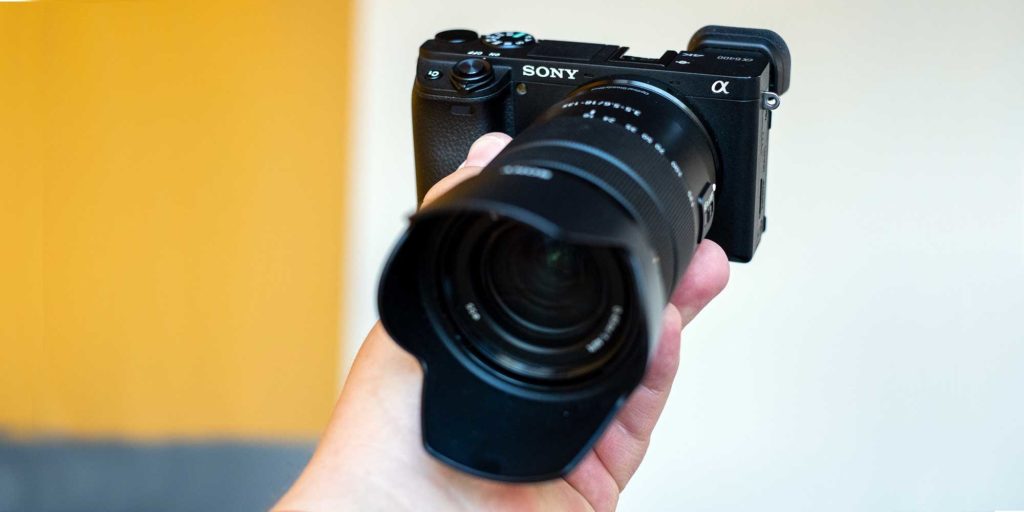
Travel means different things to different people. For some it’s about visiting sights. For others it’s more about meeting interesting people and having novel experiences. For others still it’s more about escape and relaxation. And for many it’s about food.
For most people, though, travel is all of these elements combined – although often with a greater emphasis on certain aspects than others.
It’s the same with travel photography. Some people who consider themselves travel photographers actually spend most of their time shooting landscapes. Others almost exclusively shoot portraits, or street photography.
Most travel photographers, however, will divide time on the road between shooting each of these genres; and others besides. Perhaps not in equal amounts – they might generally prefer portraits to landscapes, or vice versa – but they’ll shoot a little of everything. And often enough that they’ll need to bring with them tools for all these jobs.
Of course, the one thing that tends to differ between all these photographic genres is the focal length that’s most appropriate for the task.
In practice then, travel photographers need to make sure that they are carrying a lens for every conceivable photo opportunity they are likely to come across during their trip.
Again, this will differ somewhat between travel photographers according to their interests. But as a quick guide:
- For landscapes and the more extreme forms of street photography, many people favor ultrawide angle lenses (equivalent to 24mm, or wider, on full-frame).
- For landscapes, cityscapes, architecture and general street photography, you’ll likely want a moderately wide angle lens (typically something equivalent to a 28mm or 35mm lens on full frame).
- For environmental portraits, tighter landscapes, food photography, yet more street photography, and just general use, most people go for a standard lens (i.e. equivalent to a 50mm or 55mm lens on full-frame).
- For head and shoulders portraits, picking out parts of busy scenes, and close ups of architecture and other details, you should probably pack a moderate telephoto lens (i.e. roughly equivalent to an 80-100mm lens on full-frame).
- For tight headshots, wildlife, extreme close-ups, and some artier street and landscape images, you might also want to consider taking a longer telephoto with you too (equivalent to 120mm and beyond). Although I haven’t included any such lenses in my reviews above as I don’t really consider this a core part of travel photography.
Primes vs Zooms
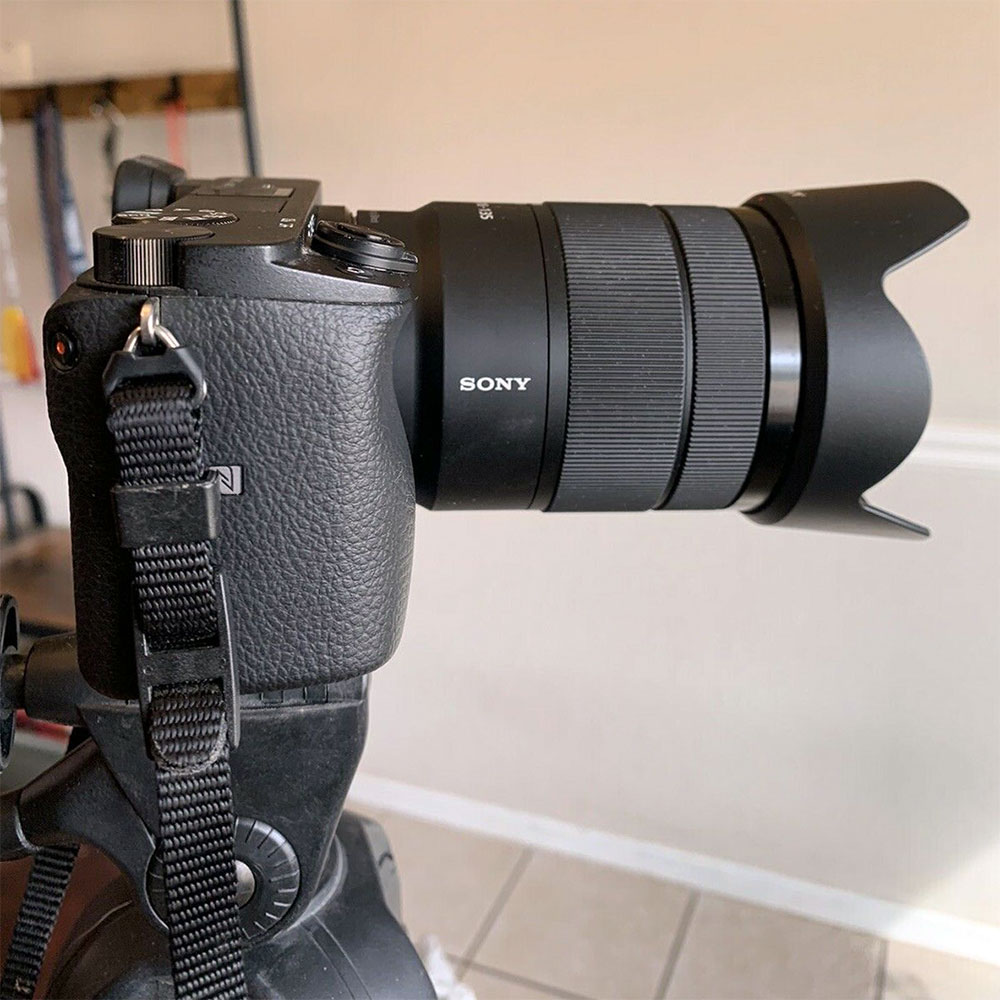
The key to successful travel photography is often simply being prepared. The range of shooting situations you are likely to encounter on the road is virtually unlimited, so versatility is essential.
If you were to opt for dedicated primes lenses for every genre of photography you might want to shoot on your travels, this could mean having to carry a lot of gear with you.
Clearly then, zoom lenses can be very appealing to the travel photographer. And rightly so, as they typically allow you to travel light, while being prepared to shoot virtually anything at the twist of the zoom ring.
But the thing is, truly outstanding zooms – i.e. ones that offer a combination of excellent image quality and a fast maximum aperture – tend to be very expensive. That certainly tends to be the case with Sony.
Meanwhile primes are usually a lot cheaper, and typically come with faster maximum apertures and even better optics.
So if image sharpness and light-gathering abilities are more important to you than convenience, you might want to consider going with primes after all.
This is especially the case if you already have a very clear idea of the kind of photographs you want to take on your trip, and know exactly which focal lengths you’ll need in order to get them.
As an example, a photographer who primarily wants to shoot landscapes and portraits could likely cover nearly every shooting scenario with just a moderate wide angle and a standard lens.
And these tend not to be especially big nor heavy items either, so they might not work out being more cumbersome than a zoom in the end.
Maximum Aperture
The wider a lens’s aperture will open up to let light onto the sensor, the more you can typically expect to pay for that lens.
For those photographers who value a faster aperture – portrait and documentary photographers, for example, and indeed anyone in the habit of shooting in low-light – this extra premium will usually be well worth paying.
But a wider aperture will also lead to a shallower depth-of-field. Which isn’t appropriate for every kind of photography.
Take landscapes, for instance. Here you’ll typically want to achieve a deep depth-of-field in order to capture the scene in sharp detail from foreground to background.
So if you plan to spend most of your time shooting landscapes, buildings, and other subjects where a shallow depth-of-field doesn’t really work, it probably won’t make sense to spend extra money on a super fast-aperture lens.
Optical Image Stabilization
Optical image stabilization – or to use Sony’s term, SteadyShot – can be extremely useful in many shooting situations. Particularly if you do a lot of handheld video work. But also when using longer lenses for stills.
Indeed IOS has made it possible to shoot shake-free images in lighting conditions that were unthinkable even a few years ago.
All other specifications being equal, then, I would certainly choose a SteadyShot lens over one without image stabilization.
The thing is, in real life, all other specs tend not to be equal at all.
Perhaps nowhere is this more true than when it comes to glass for the a6400. In fact several of the better lenses available for the a6400 either don’t have IOS in the first place.
Or more commonly, they do offer this feature, but it doesn’t work when the lens is mounted on the a6400.
This has left me with a bit of a dilemma when putting together this guide. Faced with a choice between image quality and image stabilization, I personally know which option I would choose. But I realize that readers’ priorities might differ.
The compromise I’ve settled upon is this:
- With wide and mid-length glass, I’ve been happy to recommend a number of Sony’s top-end G and GM models. Largely for their superior optics. While these lenses are not 100% compatible with the a6400, in practice the only significant compromise here is a lack of optical image stabilization. But I don’t consider this totally essential for stills photography when using wide-ish lenses anyway.
- Meanwhile, for lenses with a longer reach, I’ve mostly tried to stick to APS-C only lenses that are fully compatible with the a6400. The reason being that I think most photographers will appreciate the extra peace of mind afforded by SteadyShot when shooting at longer focal lengths.
Do let me know in the comments if you think that my reasoning is flawed here though.
Build and Weather Sealing
The days when you might have judged the quality of a lens from its weight are, it seems, long gone. Indeed it’s increasingly rare today to find a lens that’s made from anything but lightweight plastic.
To be clear, some metal-barreled designs still exist, but they are undoubtedly a dying breed.
For hardened old-school travel photographers – accustomed to being thrown around in the back of dusty local busses, along with the chickens and whatever else is going to market that day – this might be a cause for frustration. Metal is undoubtedly a very hardy material for lens barrel construction.
Personally, though, I’m not convinced that the metal vs plastic debate is such an issue anymore. Plastic also has its advantages. And where traveling photographers are concerned, the fact that it weighs a lot less than metal is clearly one of them.
What’s more, the modern engineered plastics used in top-end lenses such as Sony’s G Master range are a whole different beast to the flimsier materials you find on entry level optics. So let’s say that options still exist for those who seek durability.
However, for photographers who take a less ascetic approach to travel – taxis and 5-star suites, rather than packhorses and hammocks – durability might not be a major issue anyway.
Accidents do happen though, and knocks can occur anywhere.
So aside from using a padded case, be sure to keep your glass safely stored in a waterproof container whenever the heavens open up, as entry-level lenses typically do not offer weather sealing either.
In fact, you may have noticed that all the prime lenses I’ve reviewed here are weather sealed, while few of the zoom lenses are.
This largely reflects the fact that there simply not many dedicated APS-C-format prime lenses available for the a6400, and so all those I’ve included in this guide come from Sony’s range of full-frame compatible glass.
And given that full-frame lenses are generally aimed at more advanced photographers, it’s hardly surprising that they come with pro-level features such as weather sealing. Whereas cheaper consumer-grade APS-C lenses do not.
As a rule, then, expect to spend quite a lot more money on a well-built lens with weather sealing than you would for a run-of-the-mill model.
Focusing
Some genres of photography have quite specific, at times quasi-esoteric, requirements regarding focusing. Not so travel photography. Indeed, the travel photographer’s demands are quite general, and our requirements clear and simple: we need good autofocus. No more, no less.
True, you might occasionally want to focus manually – when shooting landscapes, the night sky, or even for certain portraits – but most of the of the time you’ll just want the camera to do its thing, and do it well.
No missed shots, focusing on the background, or taking aeons to find the target. Just fast and accurate focusing without a fuss.
The good news is that Sony’s autofocus system generally works very well. And while one or two lenses in the range may lag behind the leaders slightly, even these do a pretty good job of things.
With that said, you can certainly improve your chances of nailing focus every time by choosing Sony glass enabled for eye-detect AF.
Additionally, while most Sony lenses are quick and precise, they don’t all find their mark in total silence. Audible autofocus noise is generally only a problem for videographers who want to use their camera’s internal mics to record ambient audio. But if your travel photography borders on reportage, and you are likely to find yourself in intimate and/or culturally sensitive shooting situations – ones where the electronic grind of focus motors might be distracting, or even looked upon as rude – be sure to choose only the smoothest and most silent of lenses.
Sharpness
No matter the genre of photography they work in, everyone wants a sharp lens. But what classes as an acceptably sharp lens can vary depending on the genre of photography you’re working in.
A sharp lens for a landscape photographer is one that offers great resolution from the center of the image to the periphery. But as most landscape photographers want to achieve a deep depth-of-field, they rarely work at wide apertures.
This being the case, it’s typically not important to a landscape photographer how a lens performs at maximum aperture. Sharp or not, they will never go there anyway. But because the subject of a landscape photo – i.e. the landscape – usually fills the entire image, corner sharpness is a must.
Portrait photographers are the opposite. As they’re looking to blur the background most of the time, it’s rare to find a portrait photographer who ever goes beyond, say, f/3.5. At least not if they can help it. And because a portrait photographer will rarely position their subject at the edge of the frame, corner sharpness is invariably much less important to them.
As already mentioned, though, travel photographers are essentially jacks of all trades – and what’s more, they need to be masters of them all too.
I think you can see where this is going; and it’s not good news for your bank account.
As a travel photographer you need lenses that perform brilliantly across the entire frame and throughout the full range of aperture settings.
For this reason I’ve tried to only select lenses here that are optically outstanding.
But in the real world things don’t always work out how we want them to. And aside from the law of physics, there’s also the “law of lens budgets” to consider. And this clearly states that if you want incredibly sharp glass, you’ll need to cough up some serious dough in order to get it.
And that’s before we even start negotiating over some of the more niche wants (fast maximum aperture, amazing autofocus, the ability to take regular screw-in filters, etc.) that are dictated by the particular genre of photography you might want to use the lens for.
In short, consider the type of images you most want to produce on your travels, and seek out a lens, or lenses, that best meet your needs in terms of sharpness and everything else. As ever, though, there might need to be a little bit of compromise on your part. In fact, as a travel photographer, you are unlikely to find a lens that does absolutely everything you want it to – and that’s even if you do have an unlimited budget.
Bulk and Weight
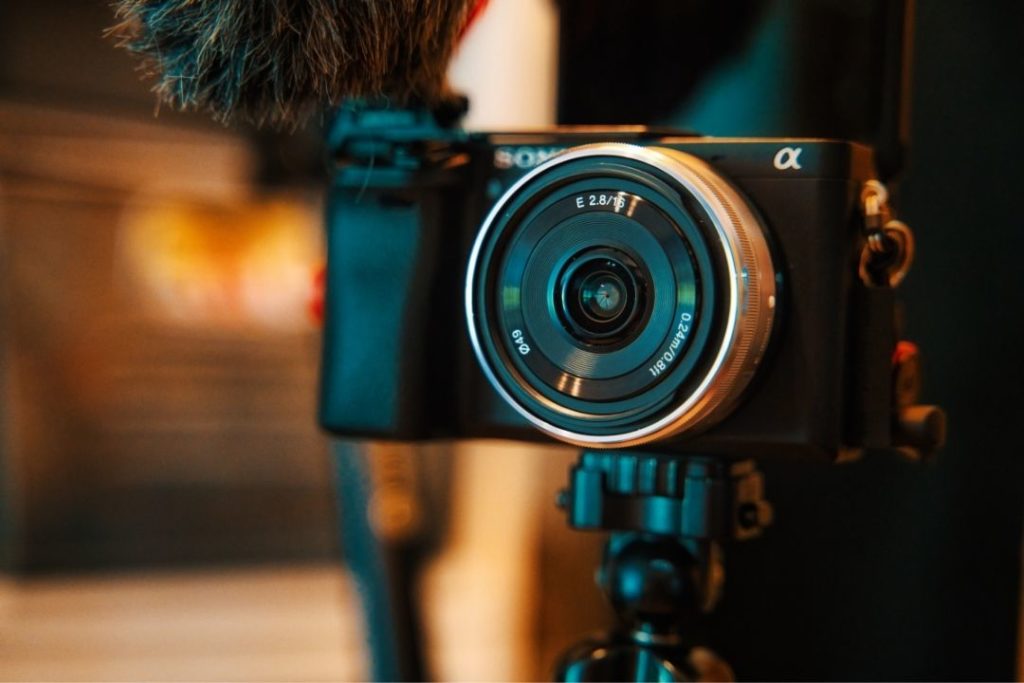
The best travel photography lens is the one on your camera when an amazing photo opportunity presents itself.
Conversely, the worst travel photography lens is one that is so big, and heavy (and perhaps even expensive) that you end up leaving it in the hotel room safe for most of the trip because it’s such a pain to carry around all day.
Clearly, then, size and weight are important considerations in a travel photography lens.
As we’ve just seen, though, they are not the only considerations. And the criteria “small and lightweight” rarely coincide with many of the other features most of us want from a travel photography lens.
Case in point: some of the lenses I recommend here are fairly compact and aren’t too heavy; several however, are relatively big and weigh a ton.
I’ve tried to avoid any hulking great monsters. But the fact is that what most of us want from our travel photography lenses also includes a bright maximum aperture, lightening-fast autofocus, and stunning sharpness. These things typically entail lots of heavy glass, plastic, and metal.
As I’ve implied above, photography frequently involves compromise. Just think of the exposure triangle; we can rarely have it all. So when it comes to size and weight, you’ll need to decide for yourself if these take precedent over all the other considerations we’ve looked at here.
Final Thoughts
Travel photography is unique as a photographic genre in that it’s really a mix of several photographic styles combined; portraiture, documentary, street photography, landscapes, architecture, perhaps even food photography or still life.
While you can’t predict exactly what kinds of situations and scenes you are likely to meet while on the road, one thing that’s for certain is that you will only be in a position to make the most of these fantastic photo opportunities if you have the right gear with you.
As we’ve just seen, though, the “right” lenses for travel photography will tend to vary considerably depending on each photographer’s personal interests and the way in which they’ll be traveling (slumming it as a backpacker, or living the high life).
Nonetheless, now that you’ve read my guide to choosing the best travel photography lens for the a6400, you should be well positioned to choose the lens – or lenses – that make most sense for you and your photography.
What would be your ideal travel photography setup with the a6400? Would you go for a single all-encompassing zoom? Or a couple of slim and lightweight primes? Let me know your thoughts and experiences in the comments!


